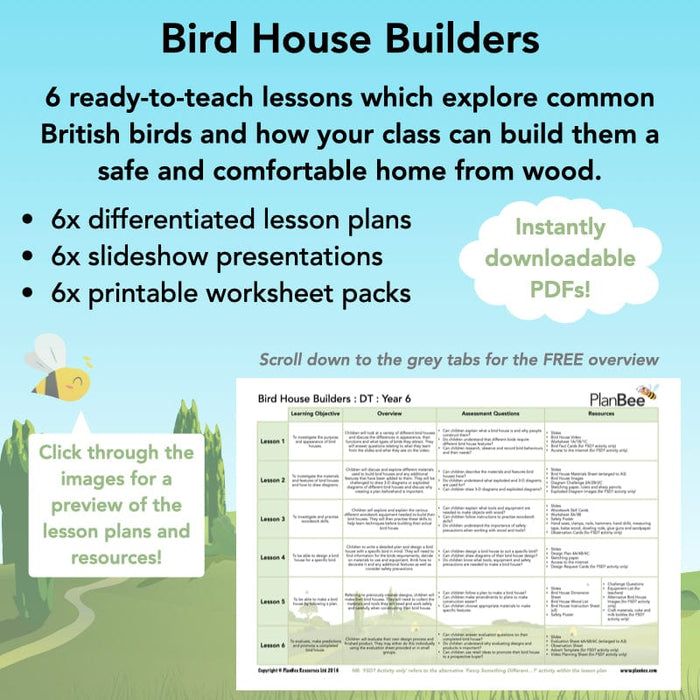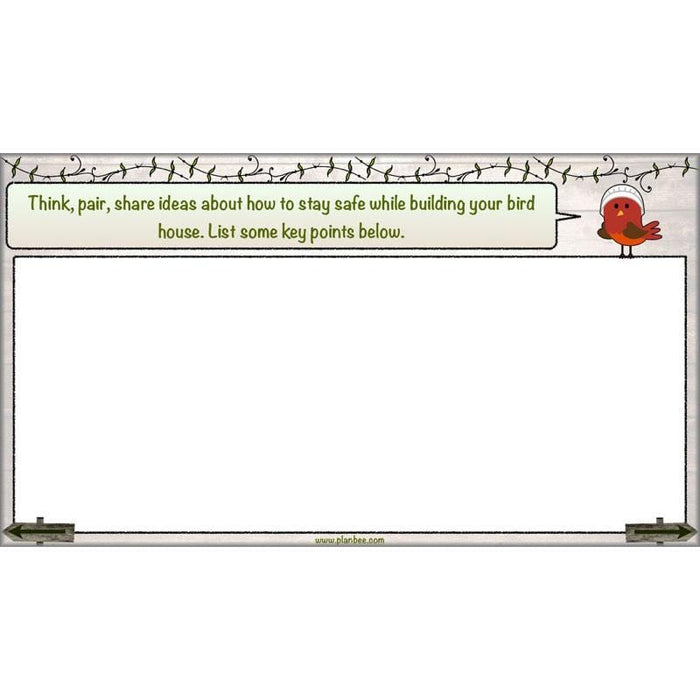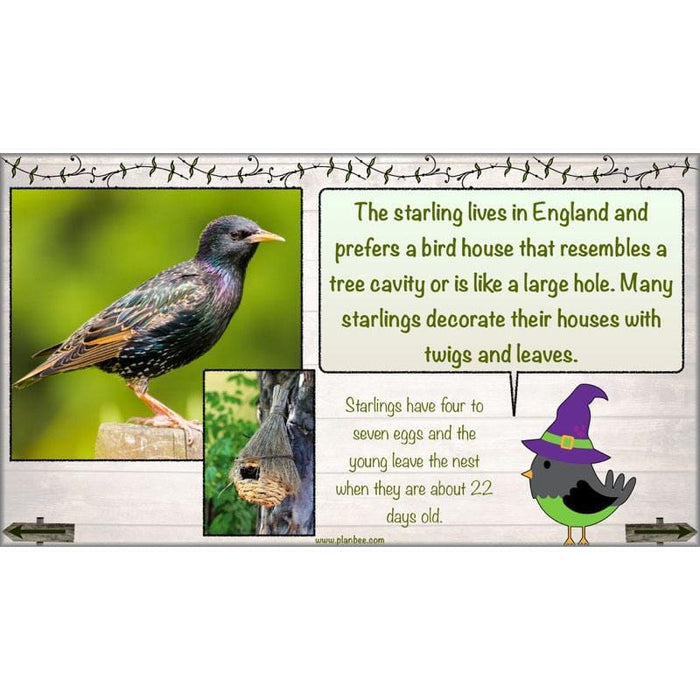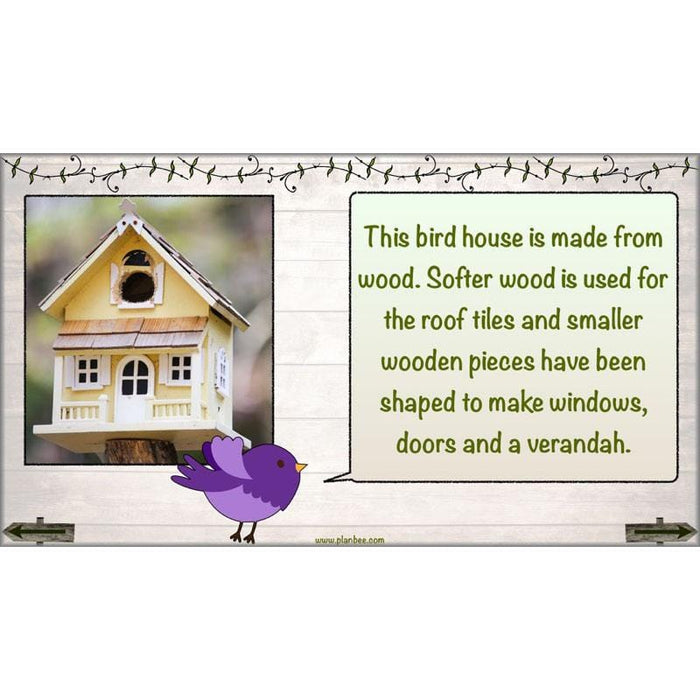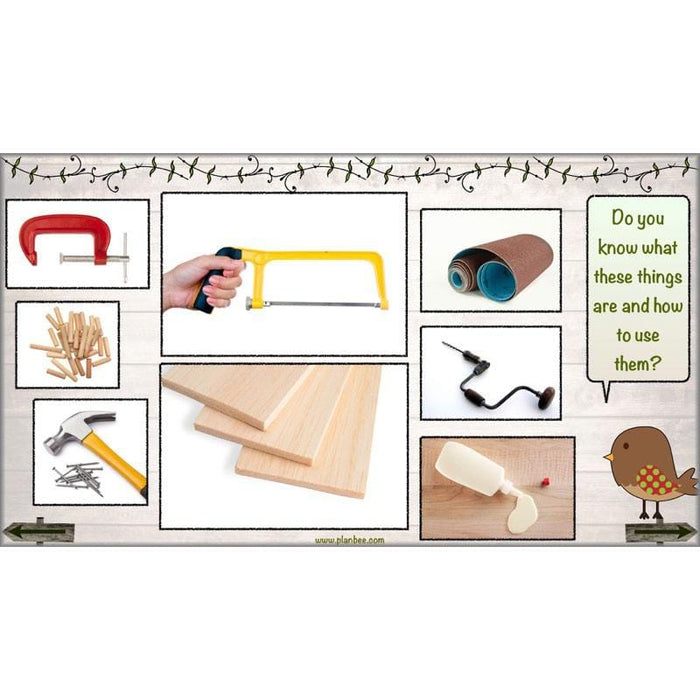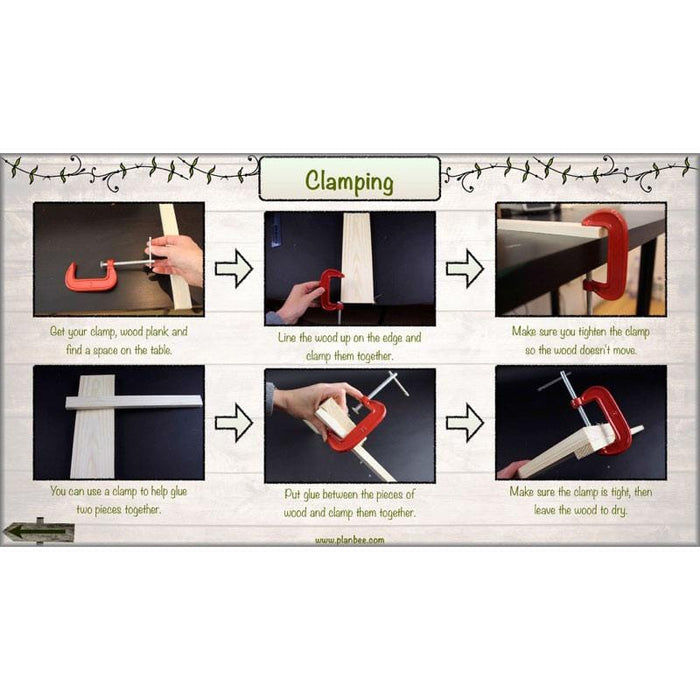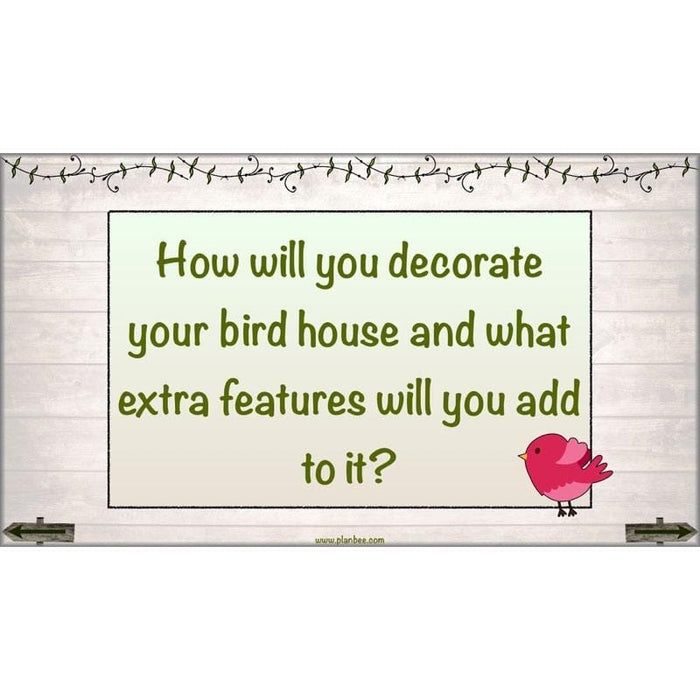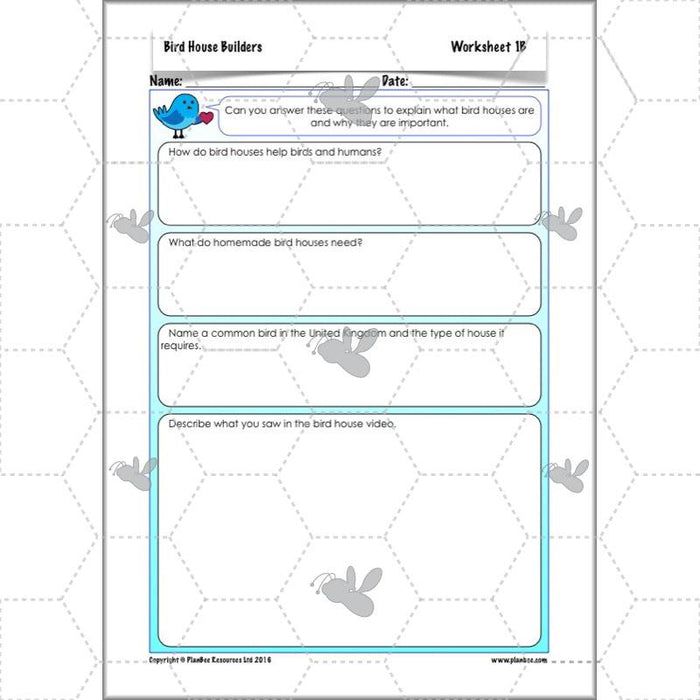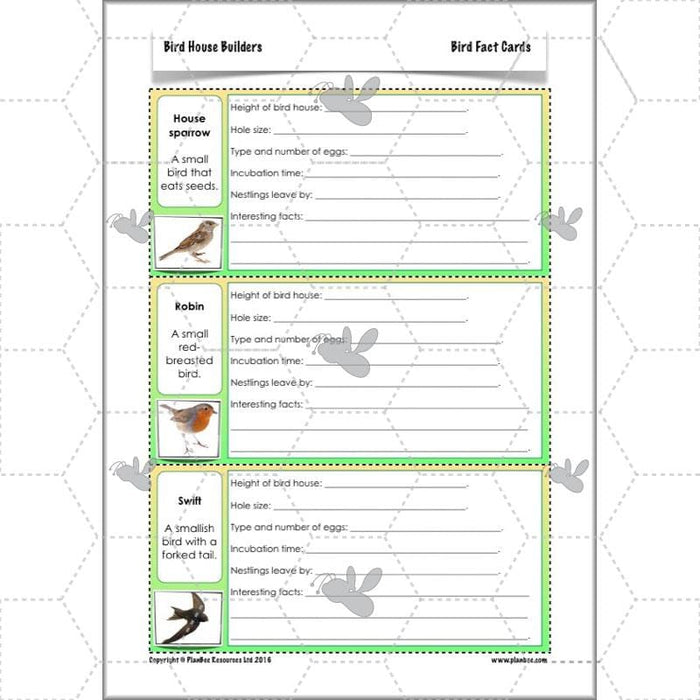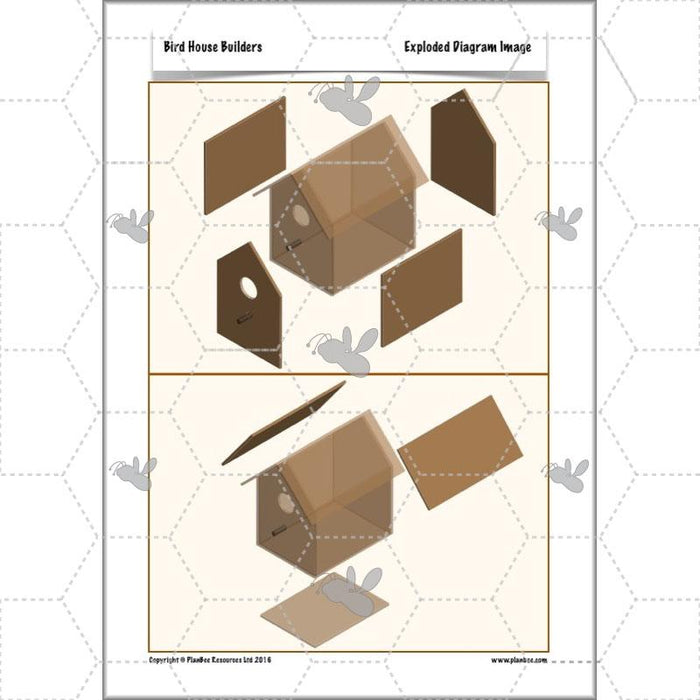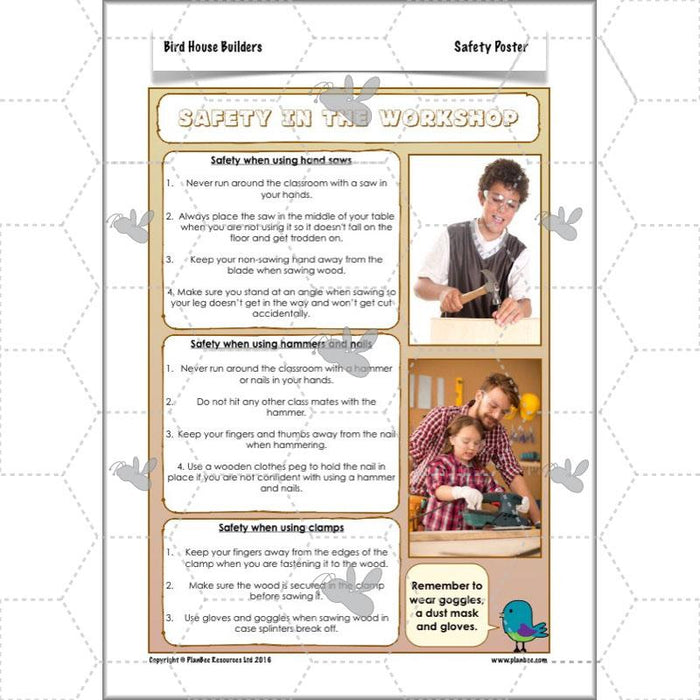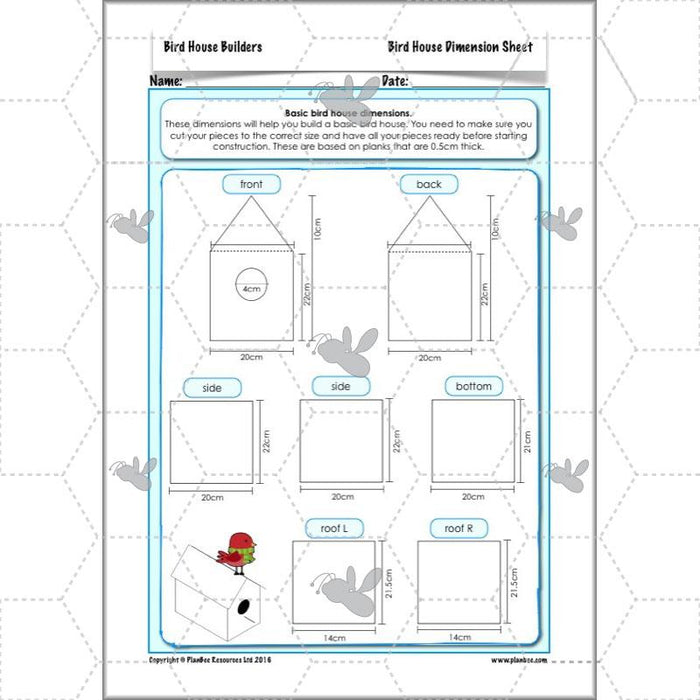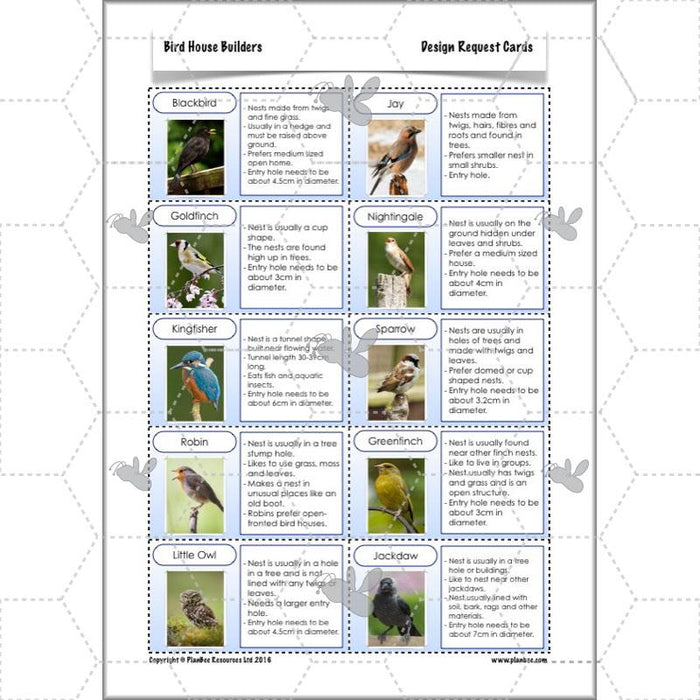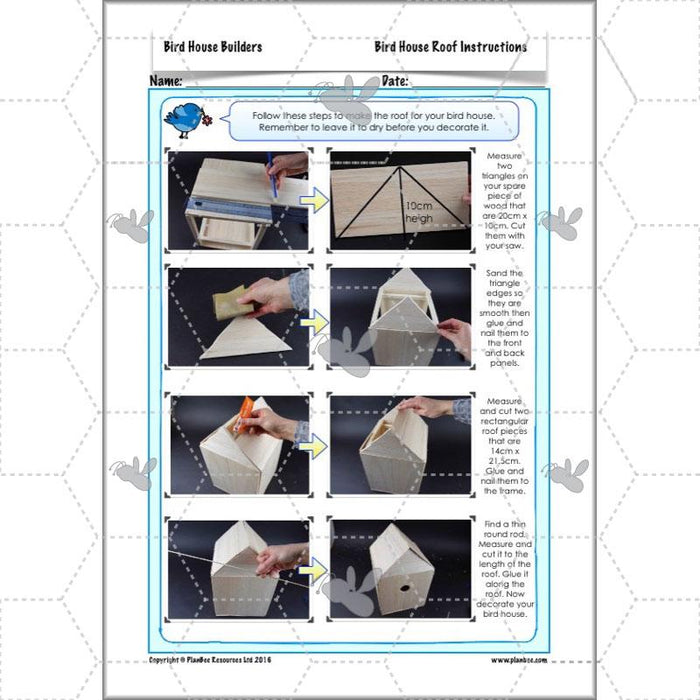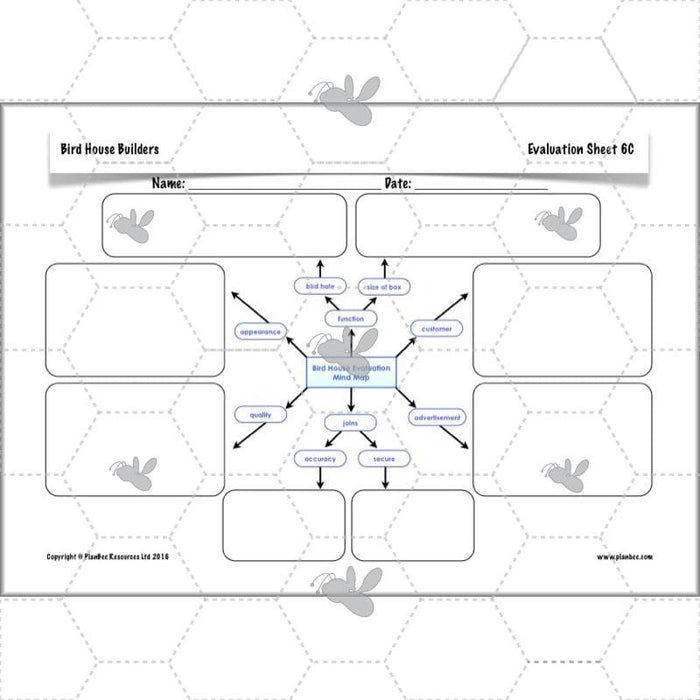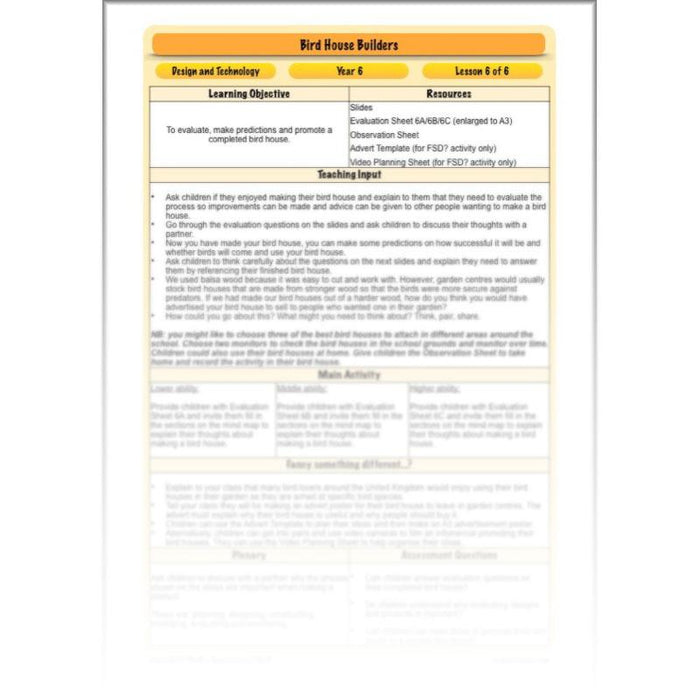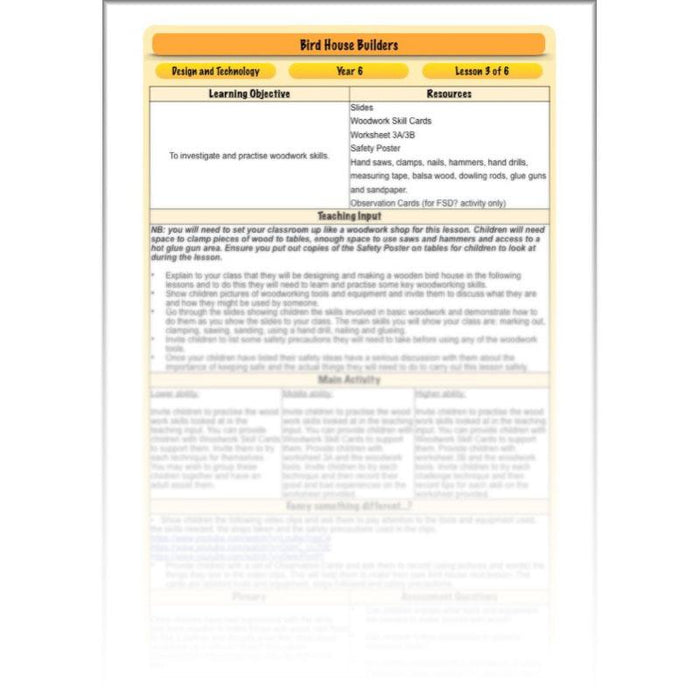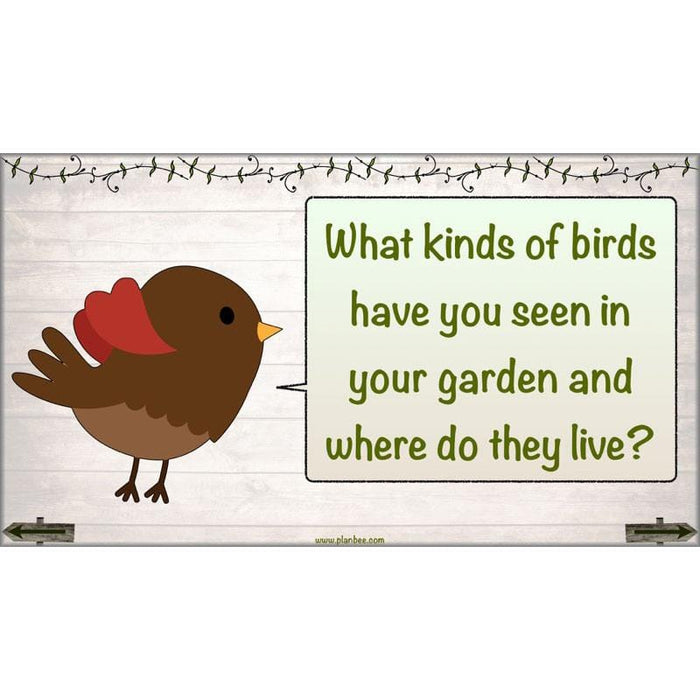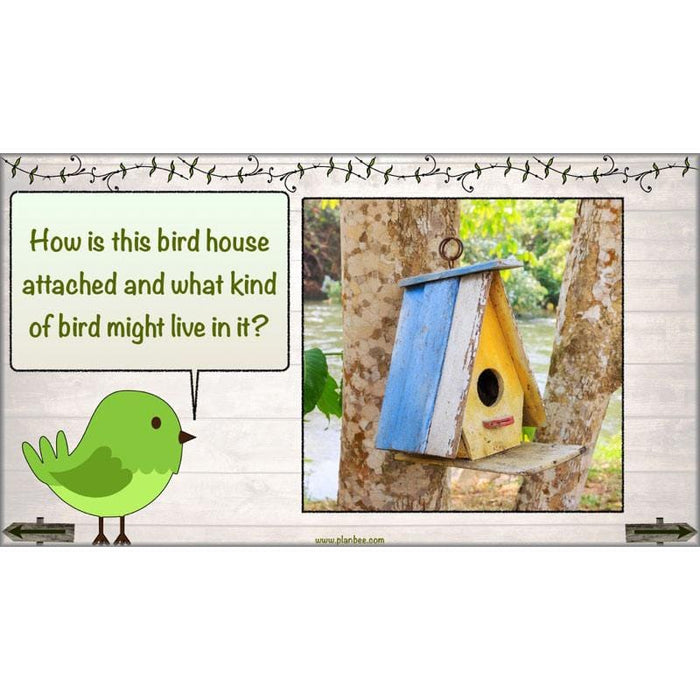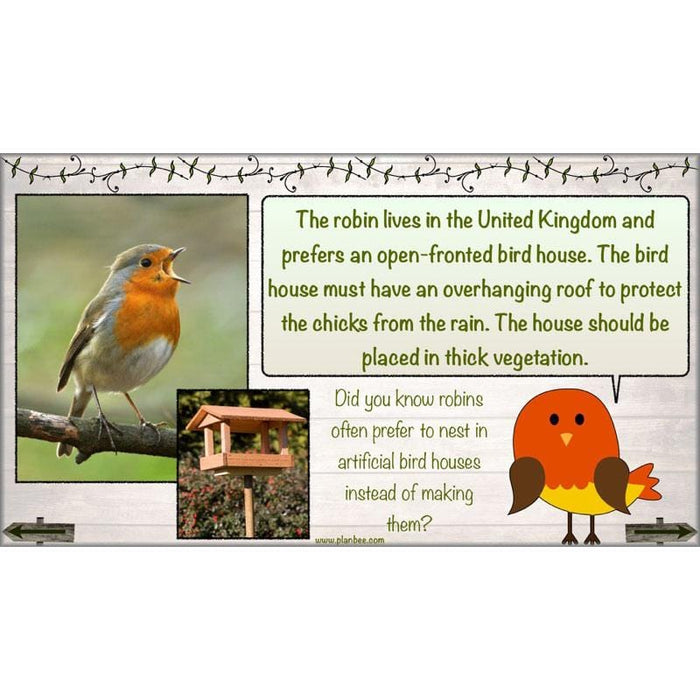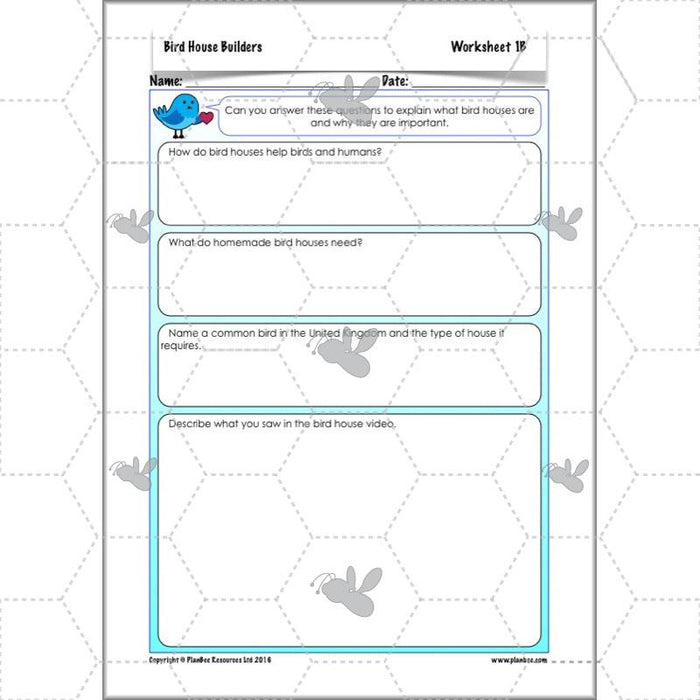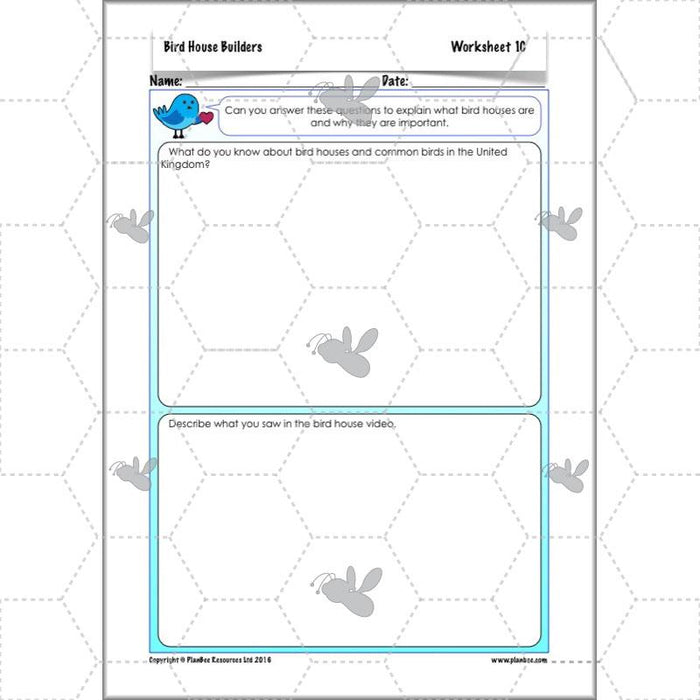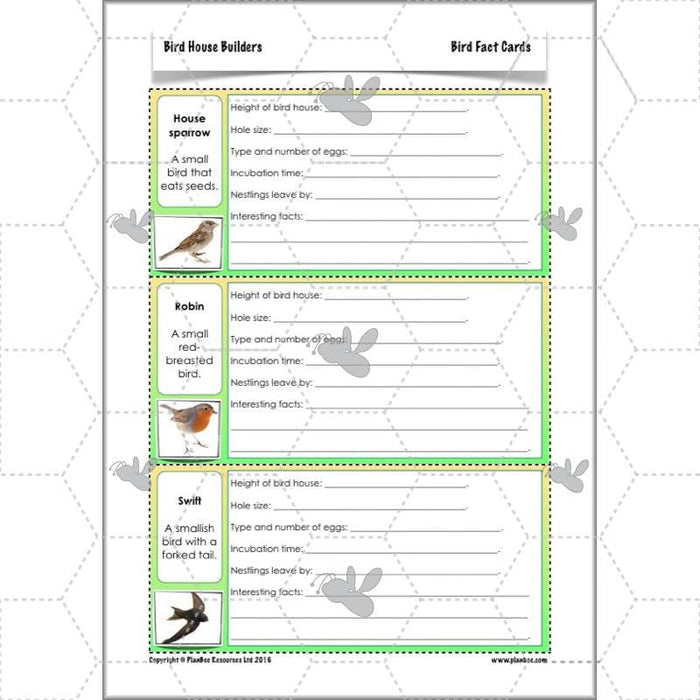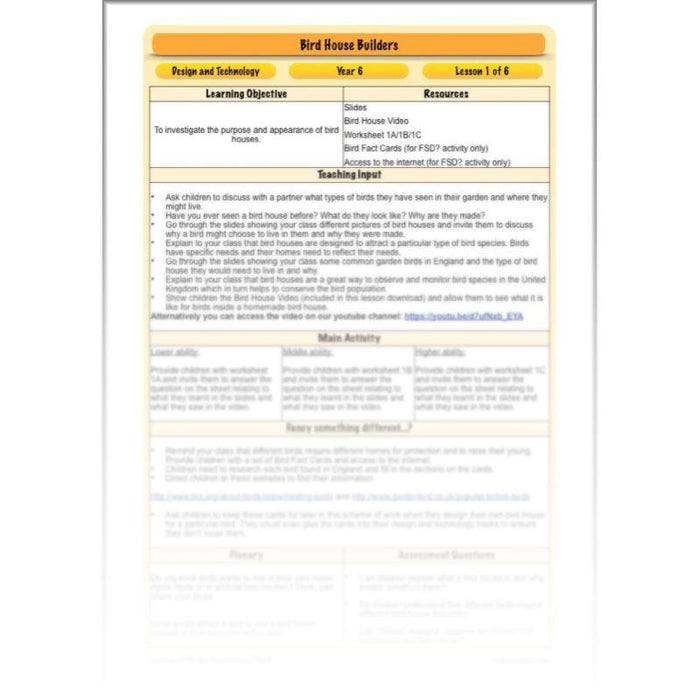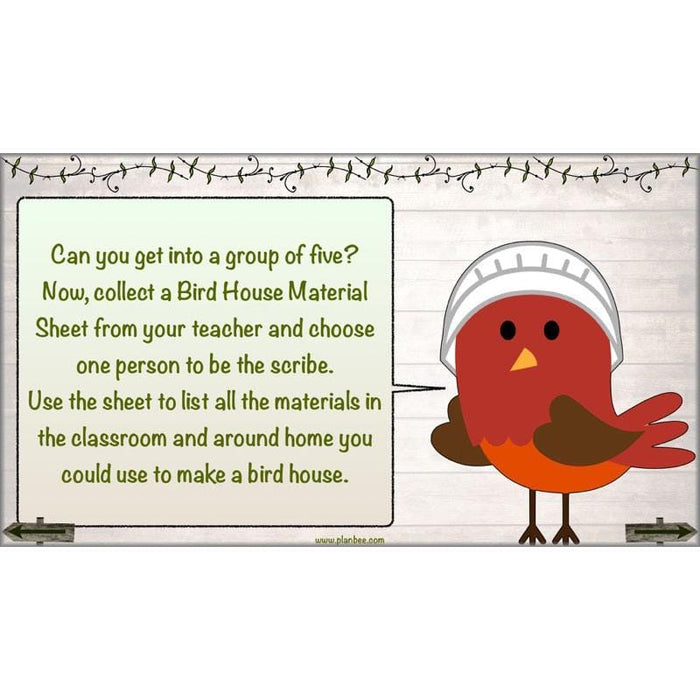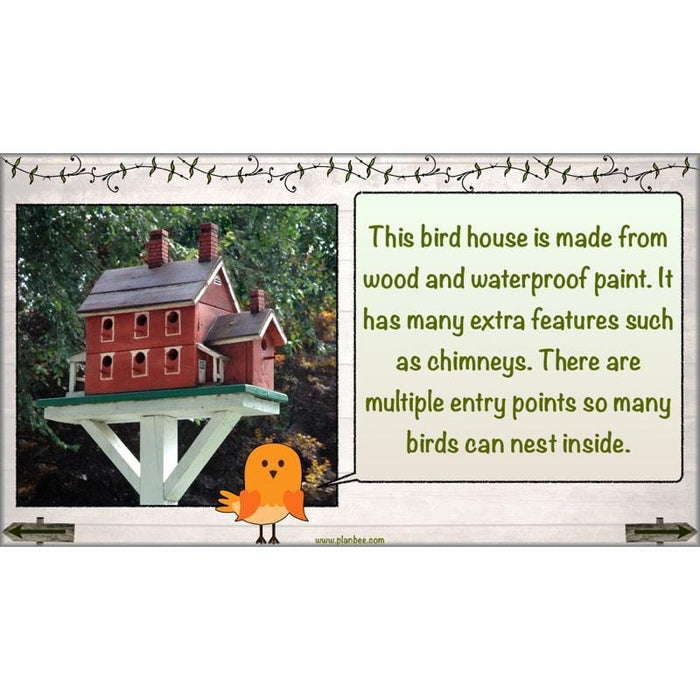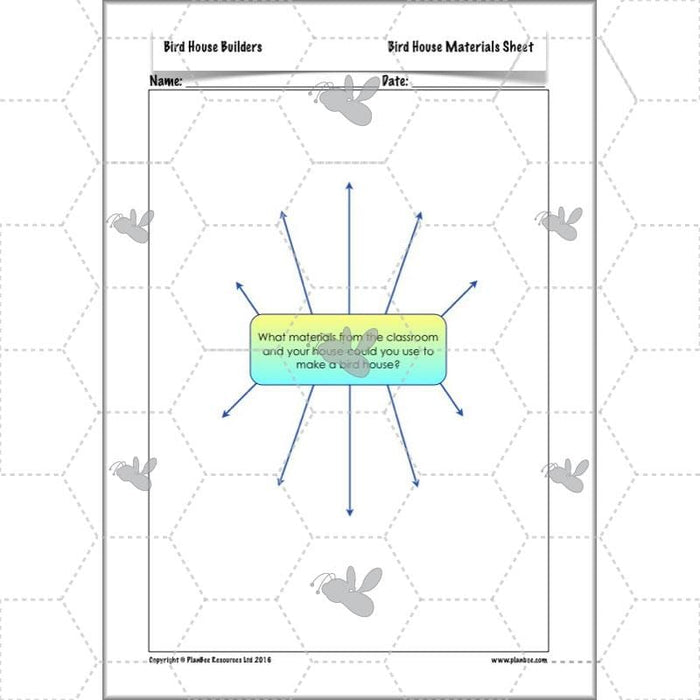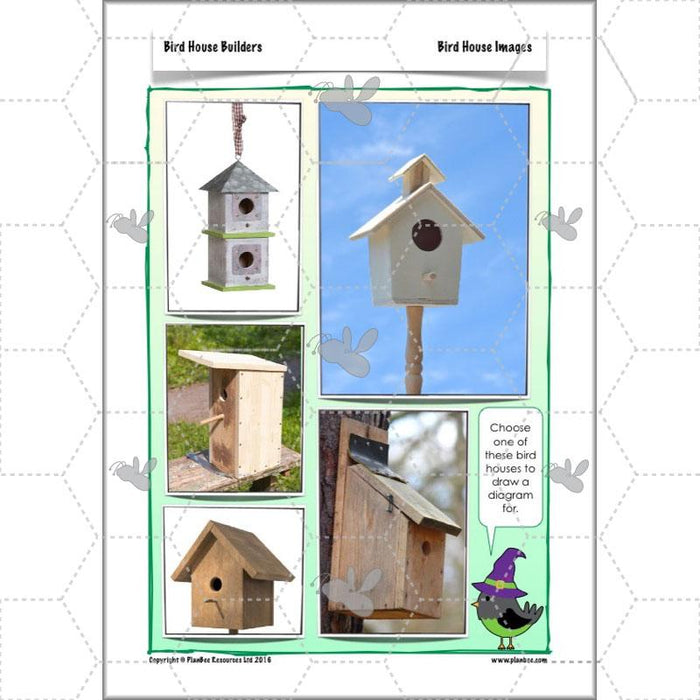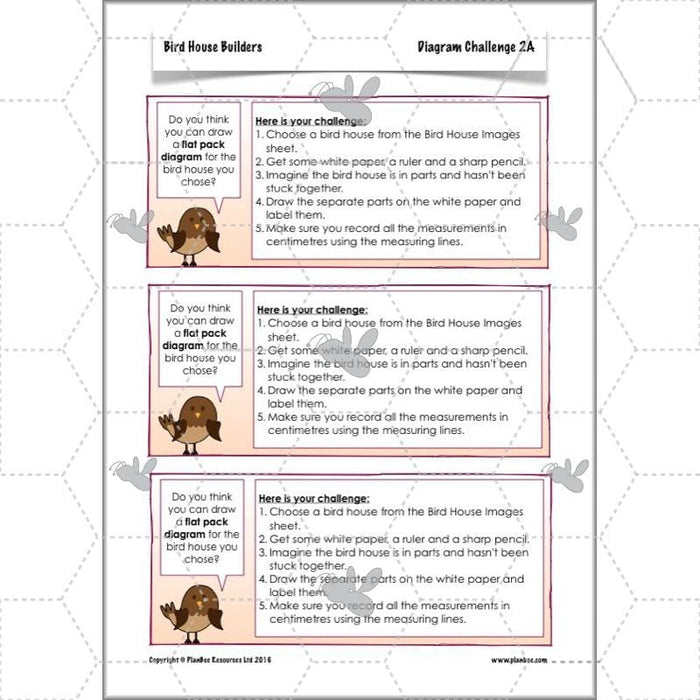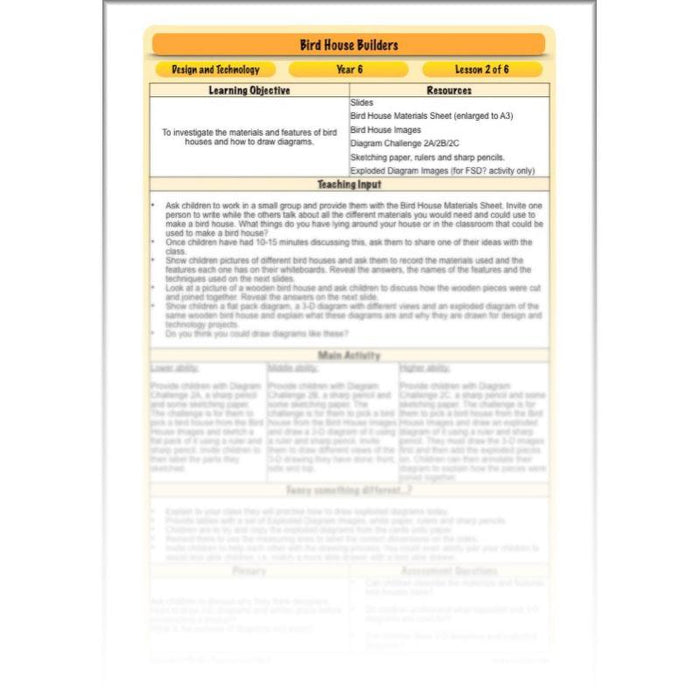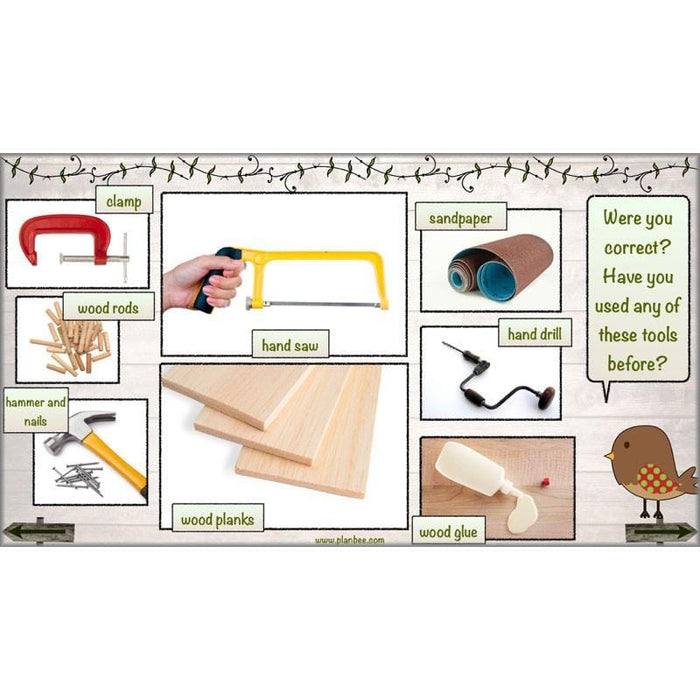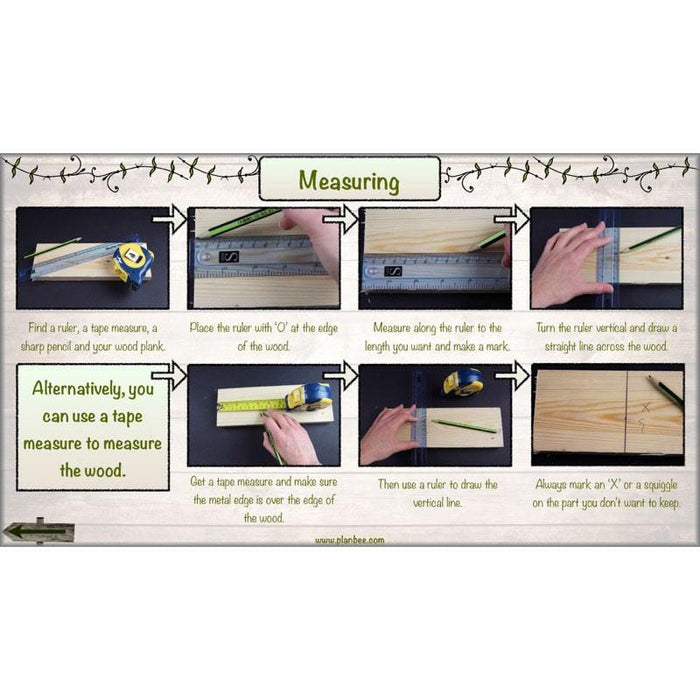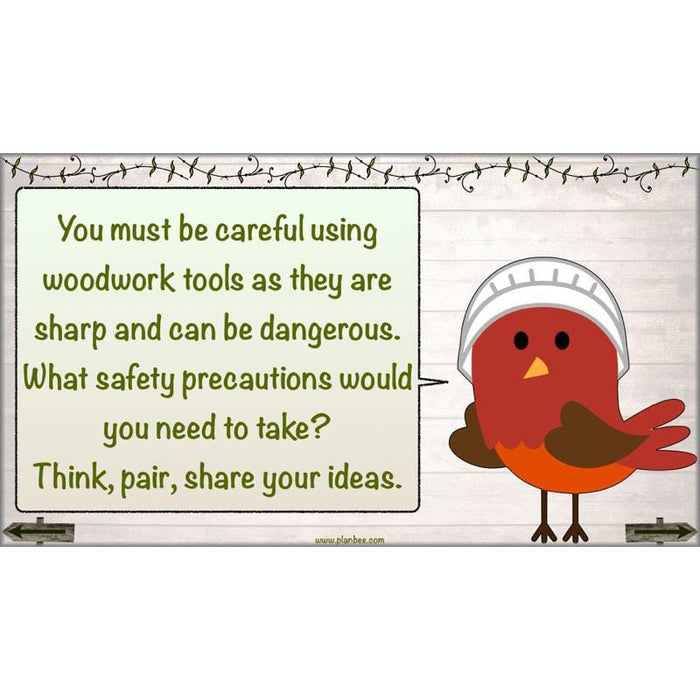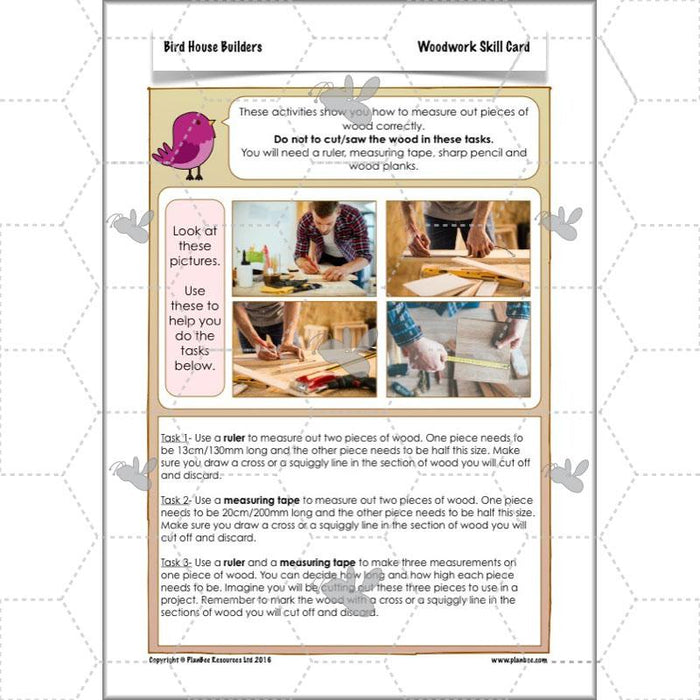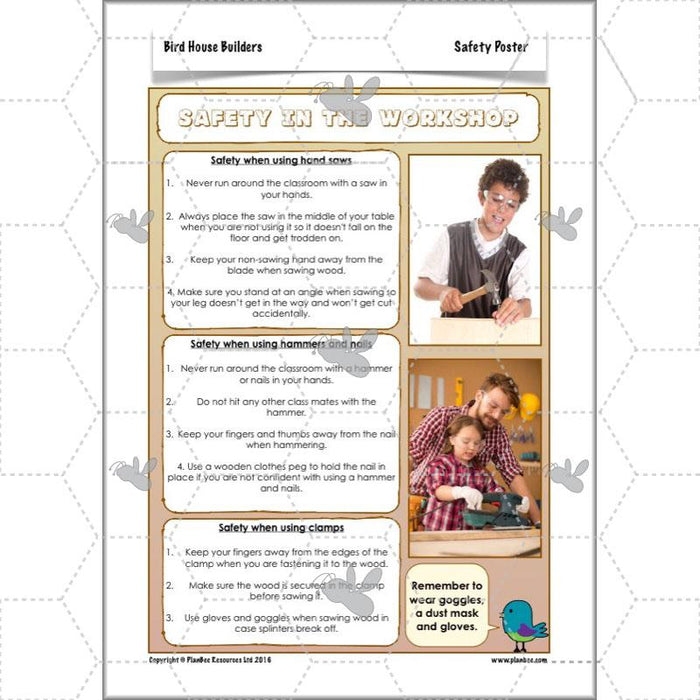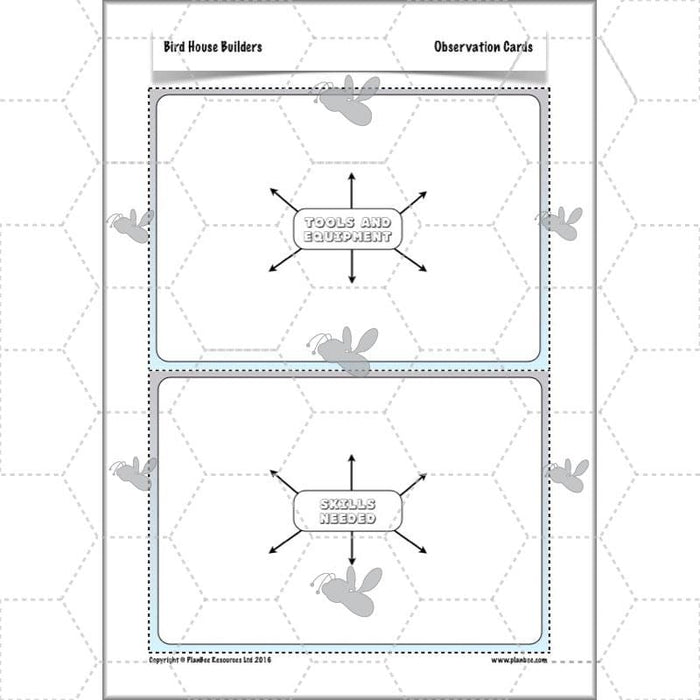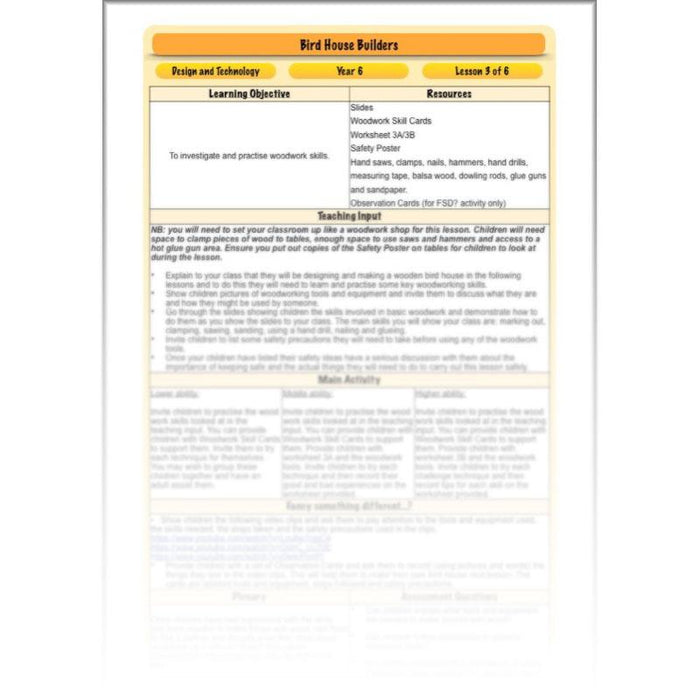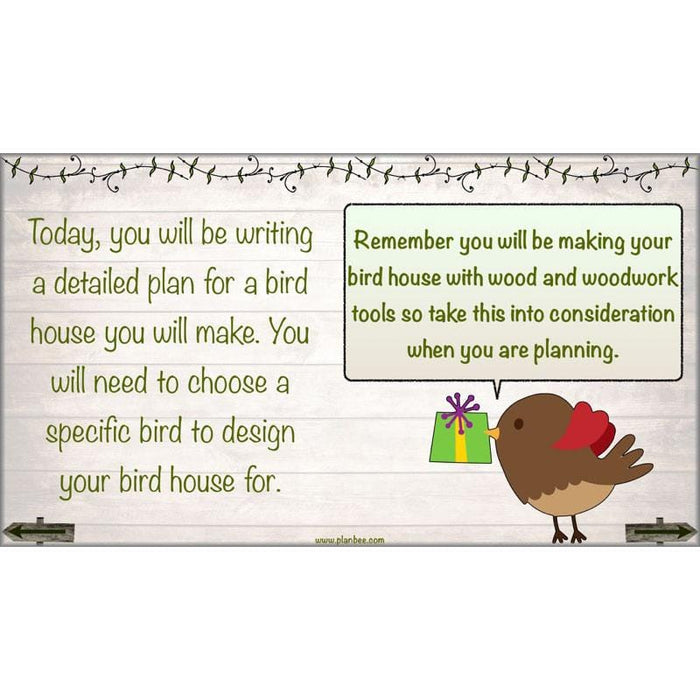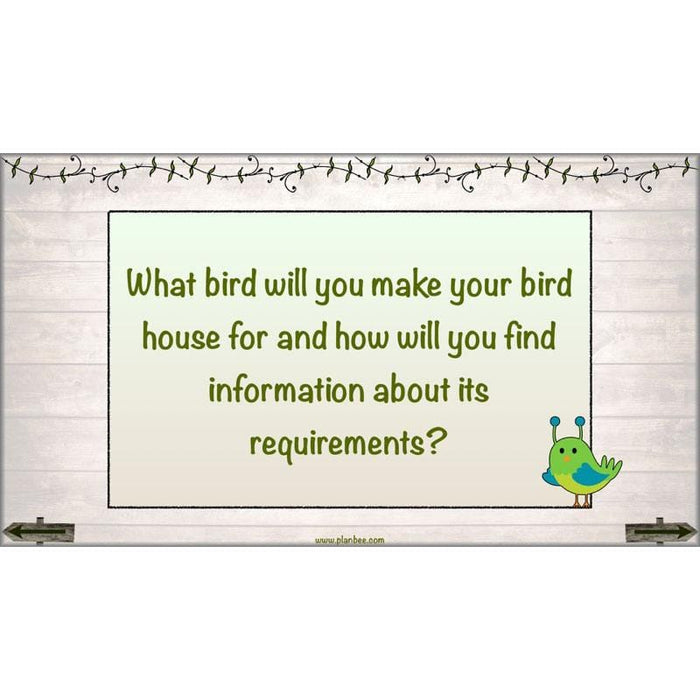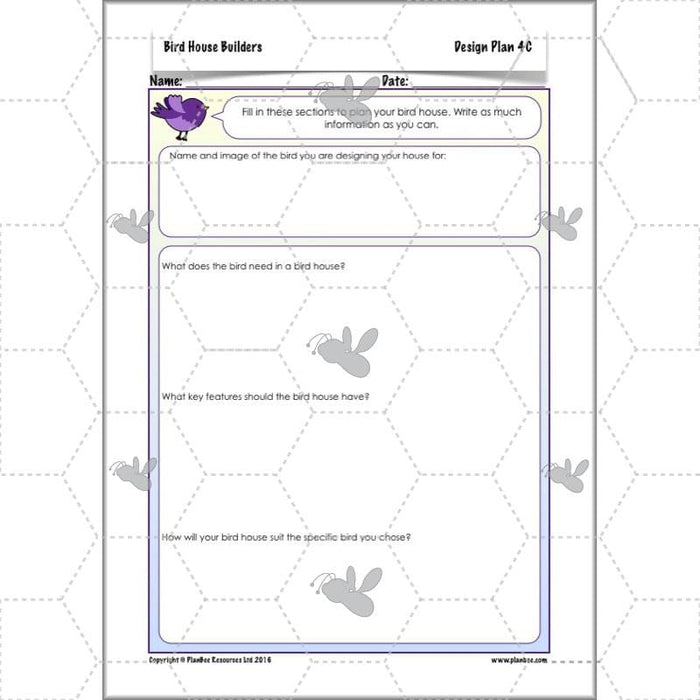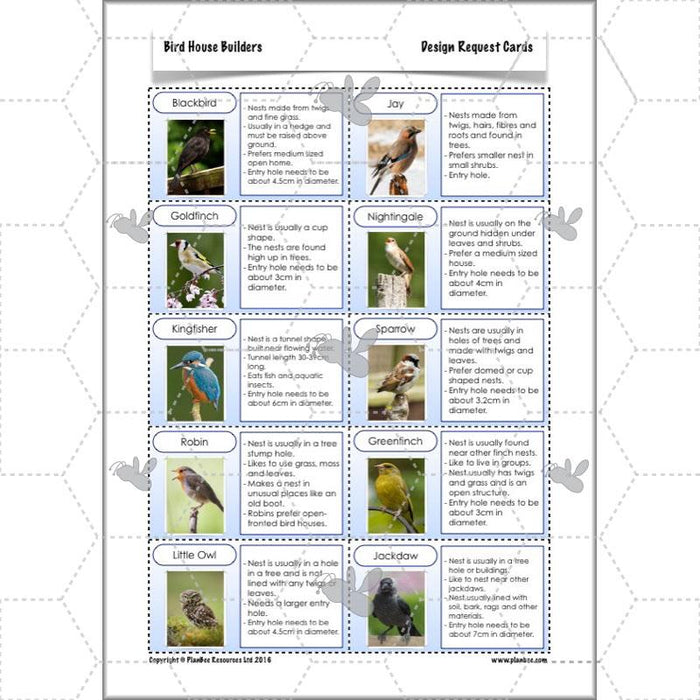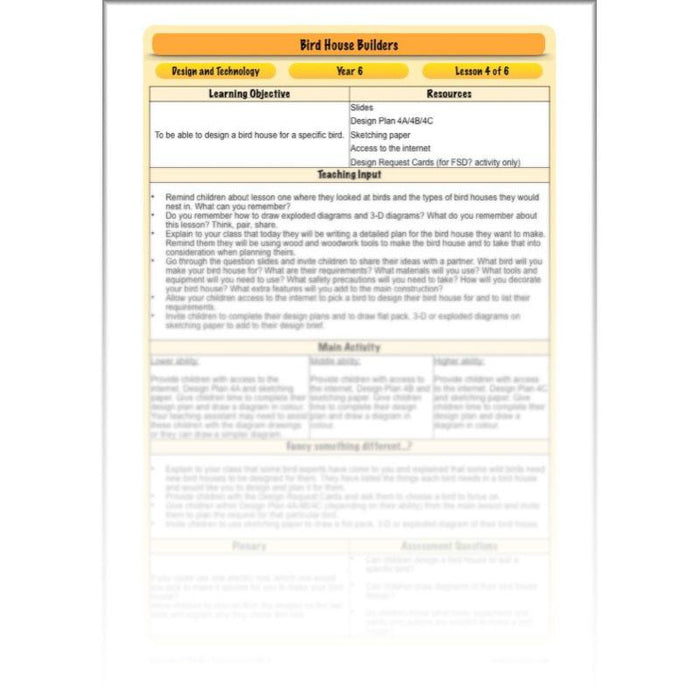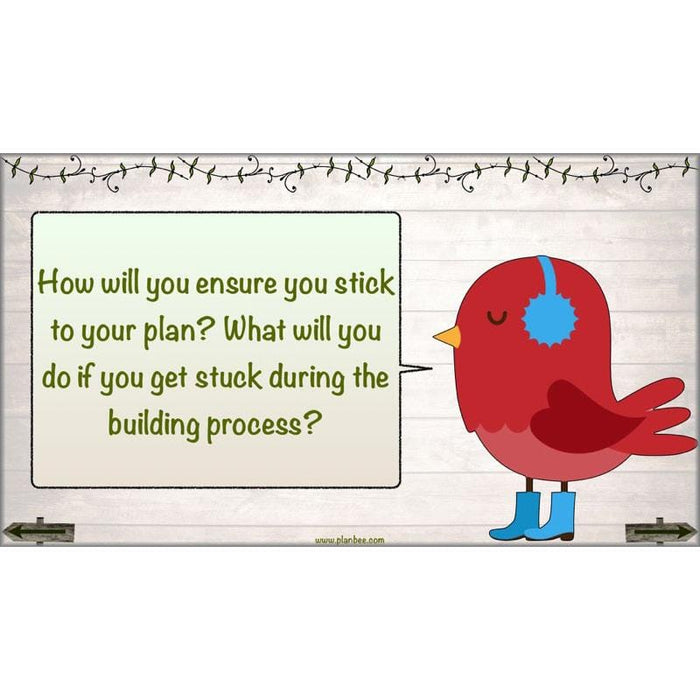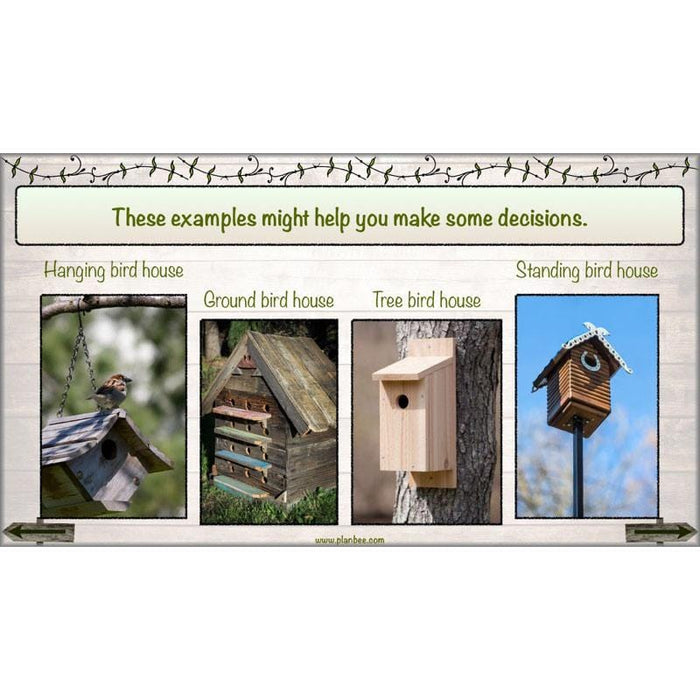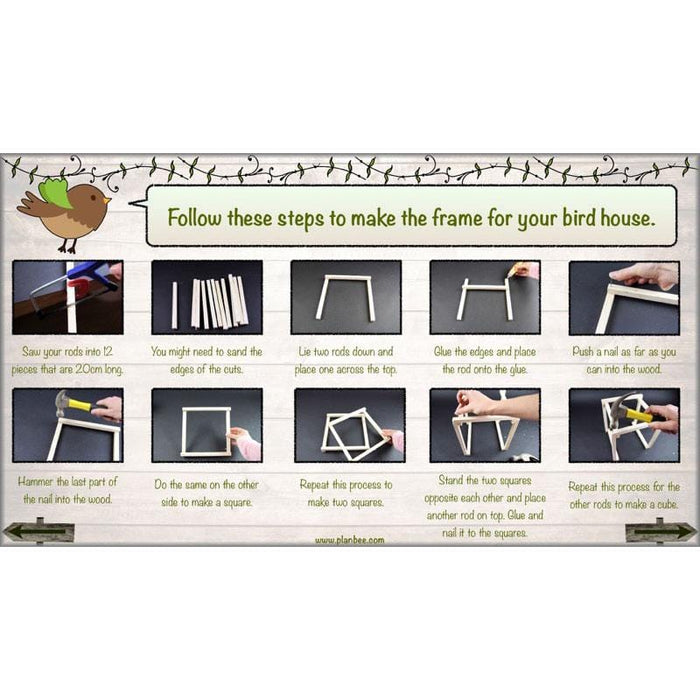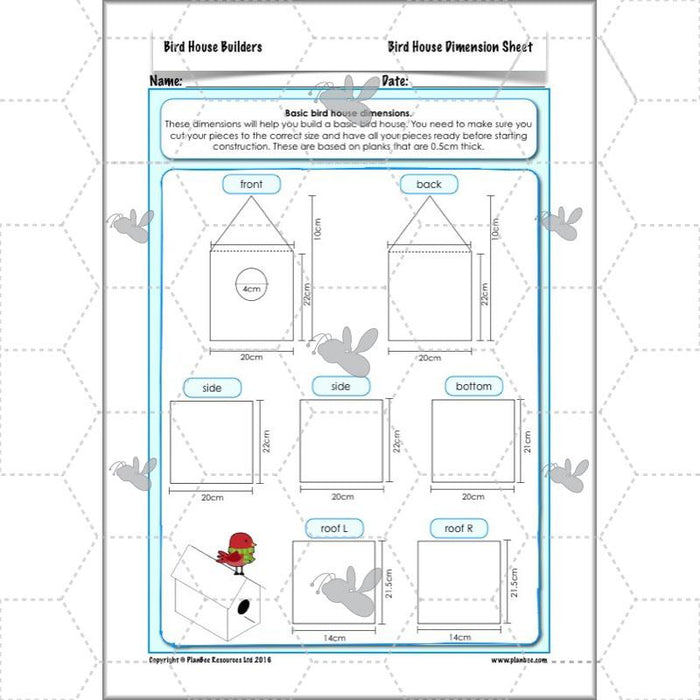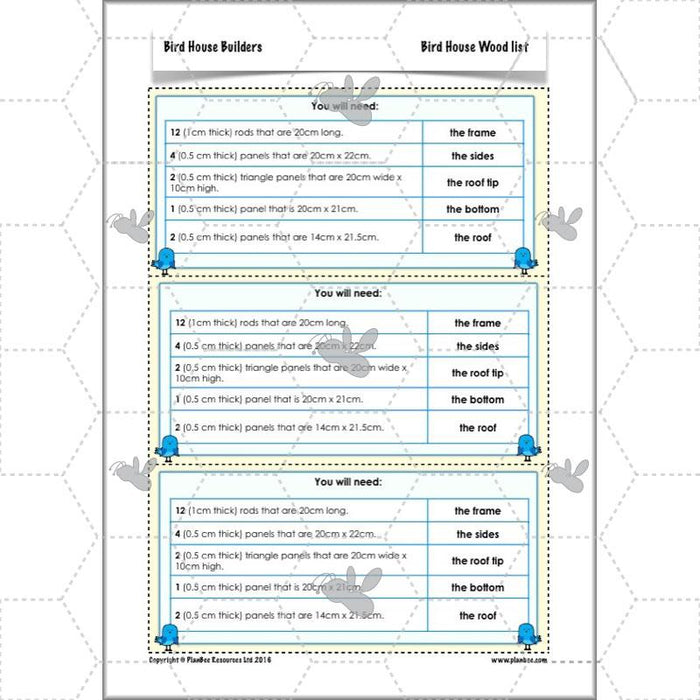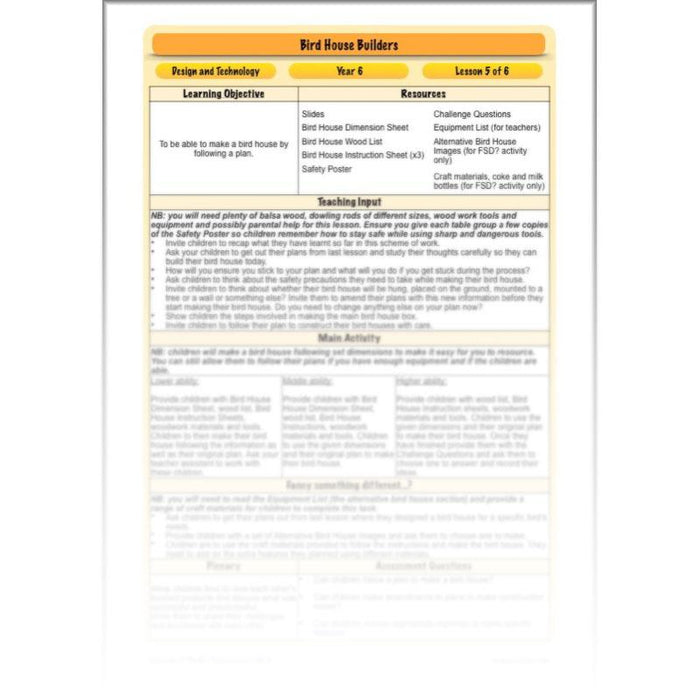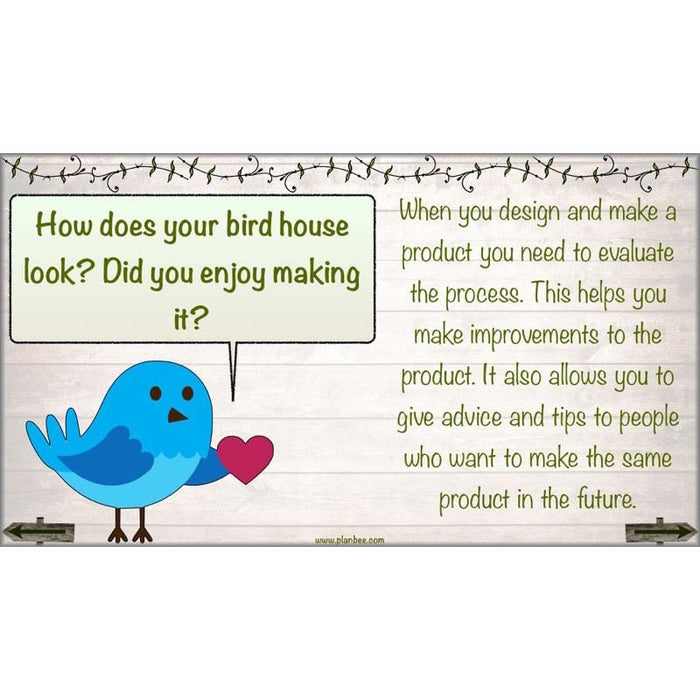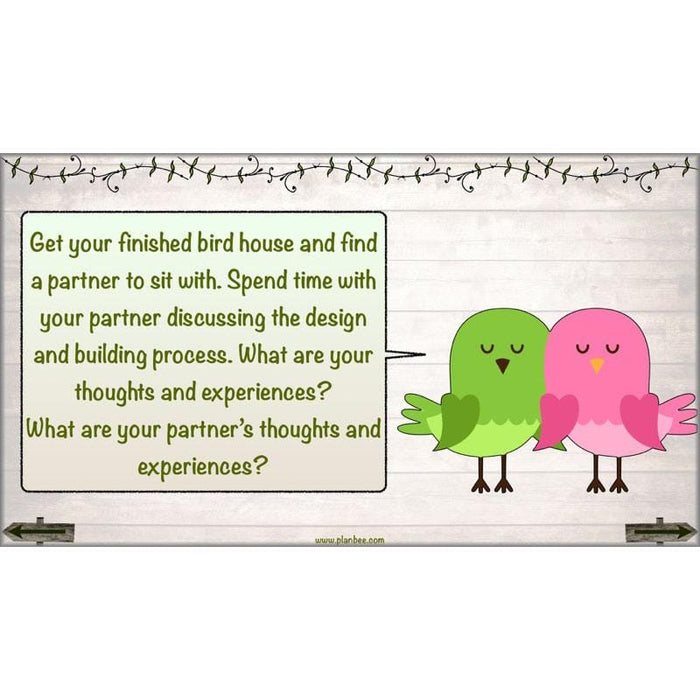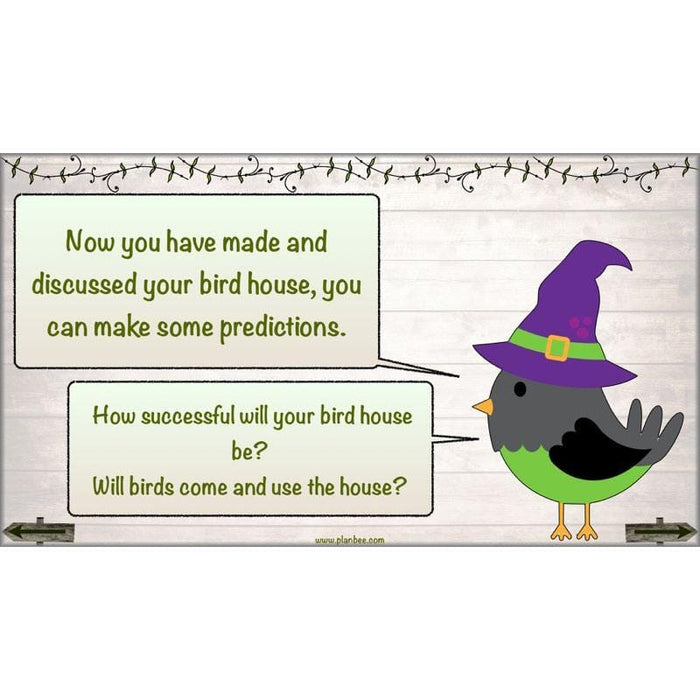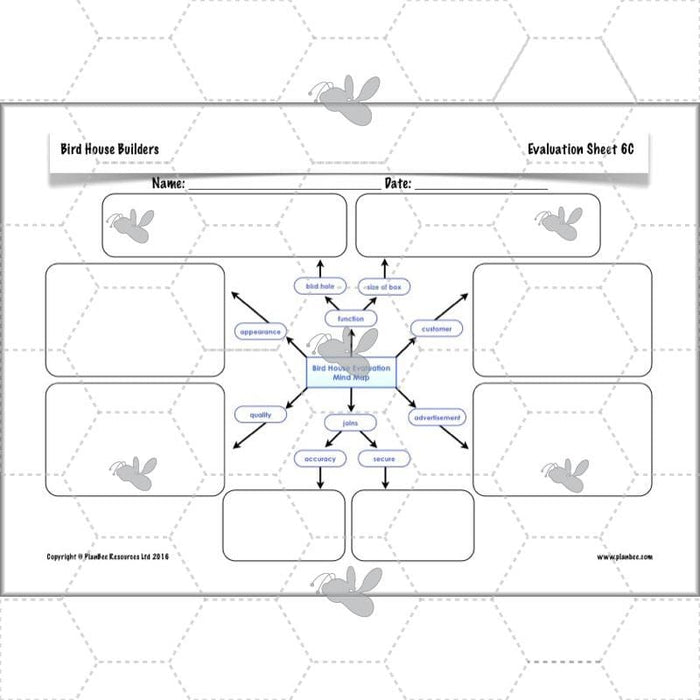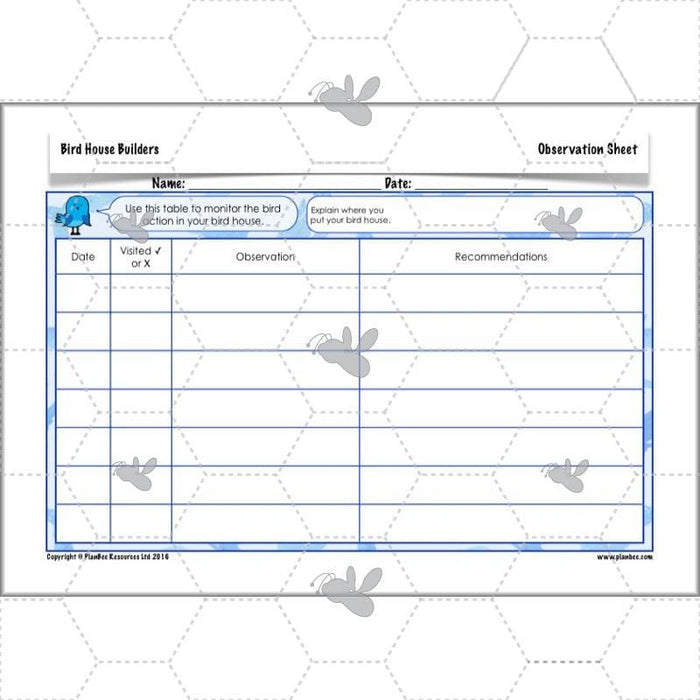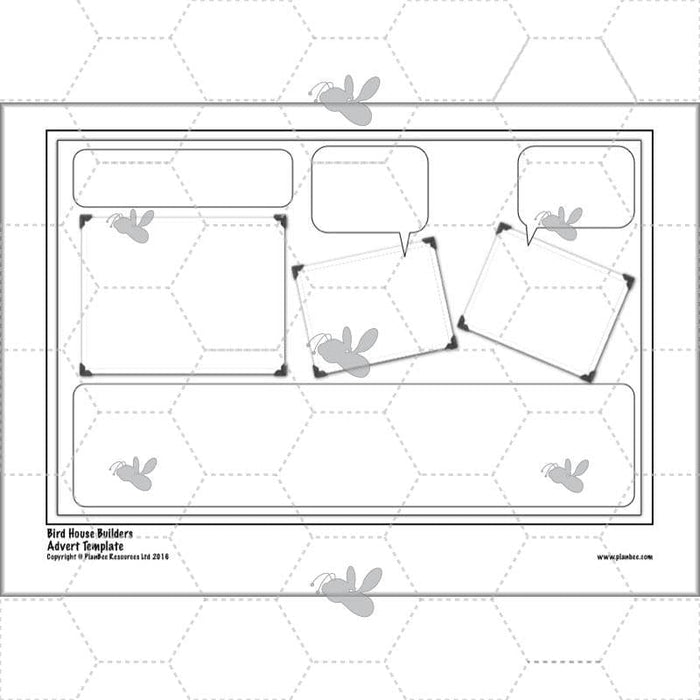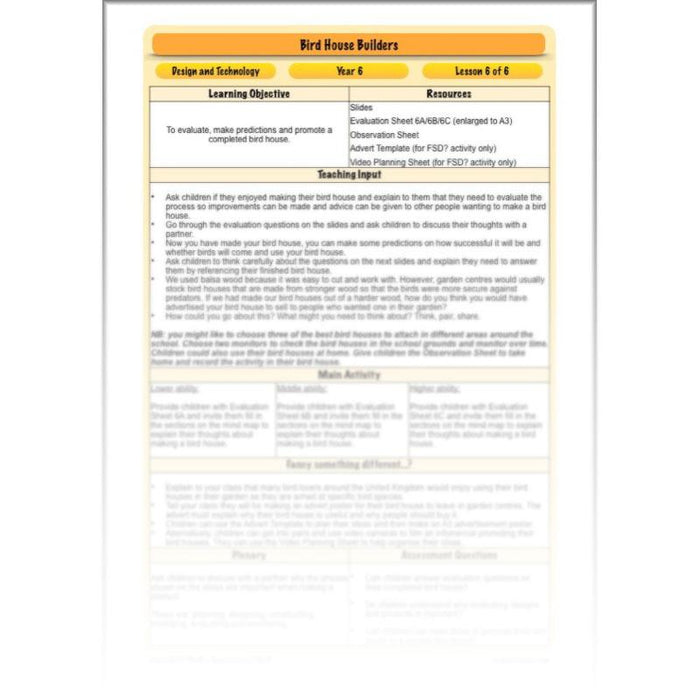#BirdhouseBuildersTheCompleteSeries6lessons
This downloadable series of lessons includes lesson plans, slideshow presentations and printable teaching resources.
#Lesson1InvestigatingBirdHouses
This lesson introduces your children to what bird houses are and why they are constructed for birds. Your class will look at images of different bird houses, discussing their appearances and what kinds of birds might choose to live in them. This lesson looks closely at the type of bird house needed for a barn owl, a robin, a sparrow and a starling. There are also opportunities for children to research other birds and record information about the type of bird house they need.
Included in this lesson is a short video showing what it's like inside a bird house for your children's enjoyment.
What's included:
- Lesson plan
- Slides
- Activity ideas
- Differentiated worksheets
- Bird fact cards
- Bird house video
#Lesson2MaterialsFeaturesandDiagrams
This lesson looks at the features and materials used in different bird houses and why they might be used. Your children will learn some new vocabulary associated with bird houses and will be able to discuss design features and their purpose. The slides in this lesson explain to your class what flat pack, 3-D and exploded diagrams are, and children will get the chance to practise drawing these types of diagrams to use later in the planning stage.
What's included:
- Lesson plan
- Slides
- Activity ideas
- Bird house materials sheet
- Bird house images
- Differentiated diagrams challenges
- Exploded diagram images
#Lesson3WoodworkSkills
In this lesson provide time for your children to practise and learn how to measure, clamp, saw, sand and glue wood together. Your class will love this practical, hands-on experience and will learn some key skills to use in future construction tasks.
What's included:
- Lesson plan
- Slides
- Activity ideas
- Woodwork skill cards
- Differentiated worksheets
- Safety poster
- Observation cards
#Lesson4DesigningaBirdHouse
Children will use their research skills, diagram drawing experience and woodwork knowledge to design a bird house suitable for a specific bird. They will spend time choosing a common bird to design a bird house for. The slides provided in this lesson question the decisions your children make and there are also opportunities to discuss ideas with peers.
What's included:
- Lesson plan
- Slides
- Activity ideas
- Differentiated design plans
- Design request cards
#Lesson5ConstructingaBirdHouse
Children will use all of their skills from the previous lessons and follow their plans to construct a bird house using balsa wood (a soft and easy wood for children to work with). Children will work safely to measure, saw, nail and glue wood to construct an easy bird house. All you need to do is order the right amount of wood and equipment for this lesson!
What's included:
- Lesson plan
- Slides
- Activity ideas
- Bird house dimension sheet
- Bird house wood list
- Bird house instruction sheet
- Safety poster
- Challenge questions
- Equipment list
- Alternative bird house images
#Lesson6EvaluateMakePredictionsandPromote
The final lesson in this scheme of work allows your class time to evaluate their finished bird house and discuss their successes and failures. Children will also make predictions about the success of their bird house and whether birds would use it. There are opportunities for children to promote their bird house to garden centres and potential buyers.
What's included:
- Lesson plan
- Slides
- Activity ideas
- Differentiated evaluation sheets
- Observation sheet
- Advert template
- Video planning sheet
Free Overview (Medium-Term Plan)
Download a free overview to support your teaching of this scheme of work.
Free Assessment Grid
Download a free, editable assessment grid to support your teaching of this scheme of work.
Curriculum Objectives covered
- KS2 - use research and develop design criteria to inform the design of innovative, functional, appealing products that are fit for purpose, aimed at particular individuals or groups
- KS2 - generate, develop, model and communicate their ideas through discussion, annotated sketches, cross-sectional and exploded diagrams, prototypes, pattern pieces and computer-aided design
- KS2 - select from and use a wider range of tools and equipment to perform practical tasks [for example, cutting, shaping, joining and finishing], accurately
- KS2 - select from and use a wider range of materials and components, including construction materials, textiles and ingredients, according to their functional properties and aesthetic qualities
- KS2 - evaluate their ideas and products against their own design criteria and consider the views of others to improve their work
